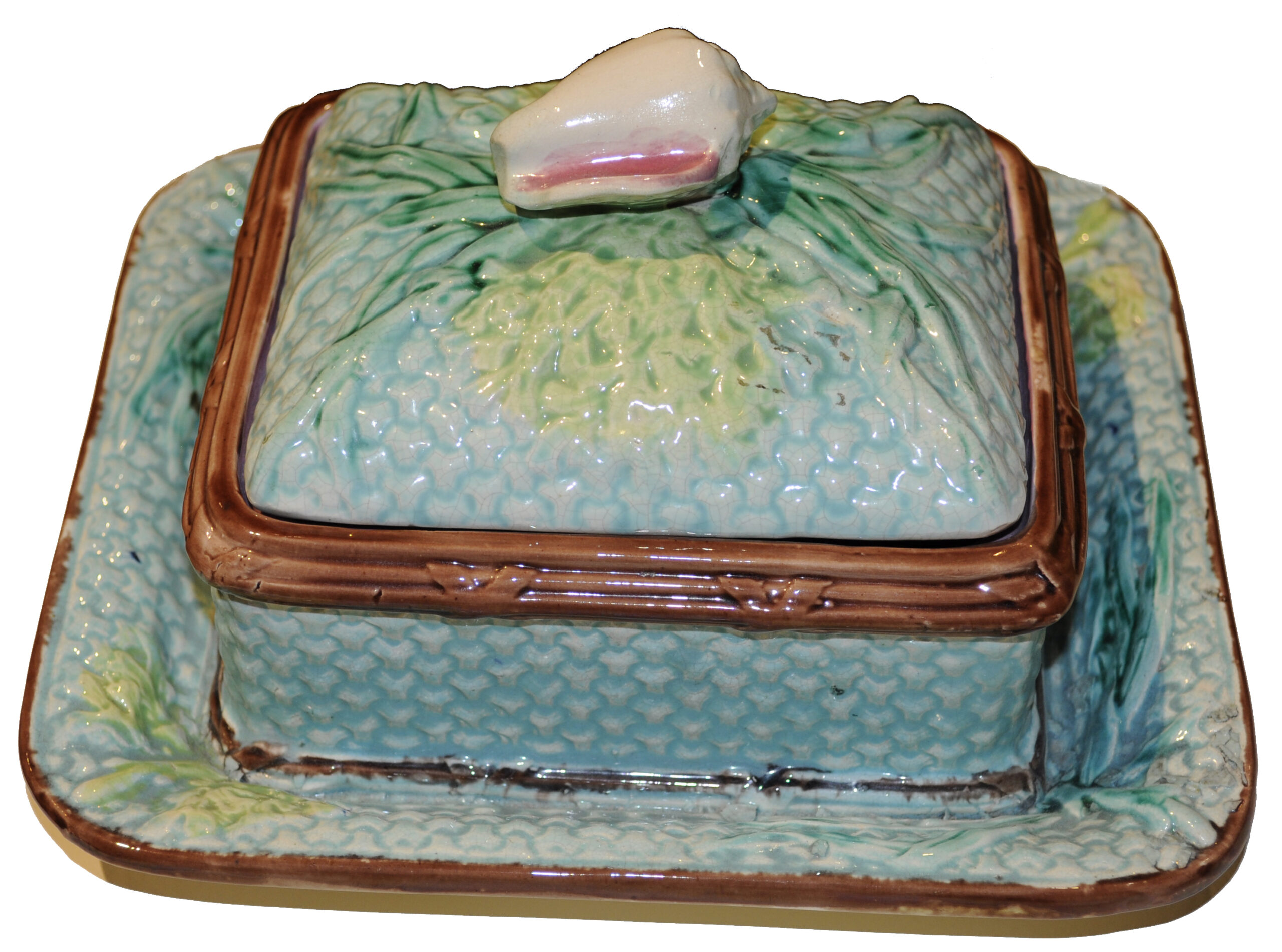
The Wit & Whimsy of Victorian Majolica
Selections from the Marion E. Byrd Collection
March 26–June 9, 2024
Forsyth Galleries | Memorial Student Center, MSC 2428
Majolica was introduced at the Great Exhibition of 1851 and quickly became ubiquitous in Victorian England and America, with works appearing in museum displays and royal palaces as well as in the homes of average citizens. As majolica retailed at a cheaper price than porcelain, it was available to a fairly broad range of society and, in Victorian homes, was commonly found in the conservatory or dining room, in the form of tureens and servers, jardinières, teapots, garden seats, plates, and decorative statues.
Initially popular in England and the Continent, many British potters and craftspeople immigrating to North America contributed their knowledge and skill to the growing American pottery industry, leading to the large-scale production of majolica. When the lead glazes needed to achieve majolica’s shine and vibrancy were outlawed as poisonous to workers, its production all but ceased. This exhibition helps tell the story of majolica and helps to restore its legacy to the history of design.





